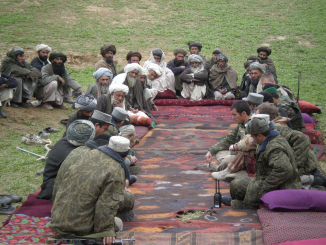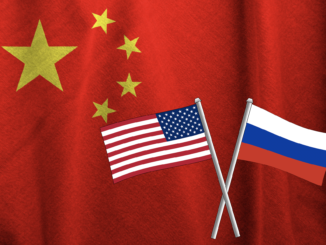
Why Nations Go to War, 11thedition by the author John G. Stoessinger, published by Cengage Learning in the year 2010. It is a unique book for the students of IR. The reflection of author John G. Stoessinger is built around ten case studies that provide a deep analysis of the root causes of modern war, from World War-I to the modern day. The author’s main emphasis is on the pivotal role of the personalities of political and military leaders who take their nations across the threshold into war. Students are sure to remember Stoessinger’s thoughts on war long after they complete his book.
Stoessinger emphasized that people either go to war by choice or participate in the war. To critically explain the war, the author has discussed the personalities of leadership. Because it is the personality of a leader which leads the societies into war or vulnerable sections of society. He mainly talked about two basic leadership personalities which affect the leadership most i.e. pragmatic and crusader. He included the case studies of those wars which were never explained by anyone in detail before. In this book, it started from WW-II to wars in the 21stcentury. He further discussed the events that could be the cause of war in the 21st century like Iran and North Korea. The author has also explained very well the reason, situation, and decision of the leadership in a time of war. Responses to the events of 9/11 receive an intensive update, ending with the strategies of the new US President, Barack Obama. In some sense, details about Korea, India, and Pakistan, the Middle East, the Balkans, and Africa are being updated to coincide with the rapid development of the 21st century. His focus on leadership and war creates a small picture of the prominent political and military people, who decided to go to war either it was offensive or defensive.
The author has also discussed the people who were against the government or their leadership and those who stood against them, who were not sincere to their people or waged wars over them because of their own set of ideas and wrong strategies. The author has explained very well that when a leader goes to war it doesn’t always mean that he loves to fight a war, or he is belligerent. It is the lack of a pragmatic approach in their leadership and failure to maintain the peace that becomes noticeable even sometimes in a ‘just war’.
Starting from WW-I, one cannot assume the leaders of axis powers as like-minded as they later were supposed to be. The first chapter has been successful in determining the role of leaders and establishing a concept as well that the military might have mostly been successful in convincing the political leaders to pursue the likelihood of war to fulfill their satisfaction. Unlike many people who believed that war would be precise, the German General Helmut Von Moltke predicted it to be “a long and wearisome struggle;” but he was also of the view that Germany was ready for war and the sooner the better.
Many scholars believed that it was out of the control of mortal men, whereas the author has denied such a view by saying that statesmen made his decisions based on fears and misperceptions and not on facts. For most scholars, the alliances’ system was the main factor behind World War-I. Since all causes of great wars have been discussed exhaustively such as alliances system, nationalism, militarism, and a little work was done on part of the personality and the psychological aspects. In his strident criticism of the political administration of the time (Germany, Russia, Serbia, and Austria specifically), Stoessinger portrays such political leaders as either egotistical, idiotic, thoughtless, or powerless and engrossed with their consciences eventually evading their duties not to have their people dragged into a disaster like World War, which resulted in a crushed generation of young people in Europe just because of weak leadership or wrong strategies by their leaders.
In chapter 2, the writer took a case study of Operation Barbarossa (1941) in which Hitler launched an attack on Russia. Hitler’s desire which led to his defeat was to finish Russia, not to conquer it. To understand, Hitler’s growing hatred of Russia, one must appreciate the fact that he smoothened his road to power with communist blood. Hitler’s hatred of Russia blinded him completely to the strategic realities. According to Hitler, “If Russia is smashed, Britain’s last hope will be shattered. Because of these considerations, Russia must be discharged, spring 1941. The sooner Russia is smashed, the better.” He ordered to wipe out Russia’s very power to exist. Hitler’s unlimited hatred for the Slavic people was responsible for one of the greatest blunders of his career.
In a sense, Germany’s defeat stemmed from Hitler’s madness that conquered his being and led to the suffering of the German nation. It might be said, Germany’s annihilation originated from Hitler’s frenzy that resulted in the suffering of the German people. Due to lack of a pragmatic approach in the leadership of Germany and Russia, both nations suffered dreadfully. The author says that Germany’s suffering was stopped after the death of Hitler but due to Stalin’s extended period of leadership Russia suffered for a longer duration.
As stated in the book, Soviet leaders felt that an alliance with Hitler in 1939 might be highly advantageous. Stalin calculated that such a pact would safeguard the Nazi dictator’s eastern side and thus give him the green light to launch an offensive against the West. Stalin’s failure to prepare for the disaster because of his blind trust in Hitler, the Soviet Union lost 600,000 soldiers. The Russian and German invasions of Poland at the outbreak of World War-II have not yet been forgotten, with the shades of Stalin and Hitler waiting on in the brains of the individuals who were stomped on upon.
Chapter 3 of this book discusses the Korean War (1950). In this chapter, Stoessinger has clarified the role of political and military leadership in the Korean War but the reasons to initiate the war remain hypothetical. General MacArthur is accused of urging the Chinese into the war whereas the leadership of the USA used the UN as a tool to stretch the war and Korean leadership goes to war by choice. The aggressive behavior of Korea was the reaction of the UN as a tool of aggression towards Korea, Which led all of them to the unbeatable war. The UN had become a party to the war, thereby compromising its role as a neutral mediator. The author has concluded the chapter with the recent stakes of North Korea by using its nuclear weapon for the privilege of international restrictions. And the last section touches on the US and UN taking diplomatic measures rather than the use of the military. Aggressive leadership’s response could be resulted in pushing the people into a new kind of war as was in 1950.
Chapter 4 of the book focuses on the Vietnam War spread over 3 decades and 5 presidents. The main theme the author focuses on in this chapter is that America entered this war through error and stayed embroiled in it through necessity. The necessity to save the US’s reputation. Stoessinger has explained the events in Vietnam War why it continued for thirty years. Truman missed Asian factors in the Vietnamese theater as Korea, Europe, and the eminent Cold War blocks established his remarks. Eisenhower ignored the lesson of Europe as well as the relations between Ho Chi Minh and the Chinese. President John F. Kennedy in 1961 recognized the instability of the Diem regime, as a result he increased the supply of weapons rather than seeking a political or diplomatic solution. Johnson called it a catastrophe in the Vietnam War. He swiftly increased the US troops in Vietnam to win the war and turned it into an American major war. This was his top priority but all of his hopes were dissolved for ending the Vietnam War. His military commanders advocated more bombing to destroy the Vietminh forces as they were now a regular army.
When Nixon took office he faced a lot of pressure from the American public to stop the war and for this, he found a strategy named Vietnamization to disengage his army from Vietnam without appearing to abandon South Vietnam to the communists and with an effort to train and equip South Vietnam to take over military responsibility for its defense. During Vietnamization US also stopped its military activities in Southeast Asia. In January 1973, the Nixon administration complied with a peace agreement with North Vietnamese leaders. According to this agreement, the US had to withdraw its remaining troops within 60 days in exchange for a prompt cease-fire. The author calls the Vietnam War the most useless war in American history. America’s involvement in Indo – China began almost gradually and ended in the Vietnam War. Each president based his policies on extravagant fears and hopes and as a result, each president left the problem in the worst condition. The experience, misperceptions, and temperament of each president played a role in the escalating Vietnam War to the worst war.
Chapter 5 of the book provides an insight view of the war in Yugoslavia that guides the reader to observe the circumstances through the lens of international law. Yugoslavia as a state emerged from the ashes of WW-II which later was ruled by Joseph Broz also known as Tito. Tito was a man of sharp diplomatic and leadership skills as there was complete peace in his time. He occasionally uses the force where it is needed. The peace prevailed until he died in 1980. As Yugoslavia was the state of multi-ethnicity but Croats, Serbs and Muslims were the prominent ethnicities that governed well under the rule of Tito. New leadership emphasized the contrasts in the public eye along ethnic and religious lines with Serbs under the Milosevic. At the point when bloodless pressure didn’t work, parties used savagery. The situation worsened with the passive separation of Slovene and the violent environment in Croatia. Serbs like Milosevic, Karadzic, and Mladic drove the Serbian war exertion against “the rest.” Outside military and multinational political activities gradually switched things around of brutality. The universal activities utilized military force close by a recharged international position against humanitarian offenses to stop the war and carry singular leaders and warriors to equity. The leadership of Serbs had confronted the international court of law for some of the sensitivities of peace and justice to the Balkans. The author has concluded the war by saying that the antagonist loses the war and is once again exposed to the world under international law.
In the next chapter, the author has explained the wars that have happened between India and Pakistan since 1947. The author discusses the colonial, partition, and war, the Kashmir war of 1965, the bloody dawn of Bangladesh, nuclear Viagra, and India’s 9/11 Mumbai November 2008. As indicated by the author the most savage war which depends on religion was neither the Christian campaigns against Islam nor the thirty years war that set Catholics in opposition to Protestants. It was the war of Hindu against Muslims in the twentieth century. Territorial disputes, religious differences, and cultural differences merged as the fundamental reason for disputes in the region, in which most of the conflicts are continuing due to the clashes between the leadership from both sides. India and Pakistan are facing some of the complex nature and destructive issues that they need to resolve for the security and stability of the region, in a sense of regional, political, ethical, and cultural aspects. Being a neighboring state of India and Pakistan Bangladesh is also facing problems like India and Pakistan.
The author has also discussed the threat of nuclear war between both states. Because both states consecutively deter each other to use nuclear weapons and increase the risk of war. The author takes nuclear as an option between India and Pakistan but also the element of deterrence. Stoessinger also covered the event of the Mumbai attacks by calling Indian 9/11 from Pakistan. The Indian restraint to not raise the armed solutions is perhaps enlightened by its democratic culture and per author Pakistani leadership still needed to be dominant.
Moving towards the Middle East, the author believes that US Administration choices were initially a zero-sum game situation of right conflicting with wrong. Arab and Israeli authority regardless assumed their job to consistently accept countries to war as they held a profound zero-sum game that made war alluring. Saddam Hussein enjoyed a few wars against his border-sharing states and his kindred residents just to find that he increased little from war battling about a time of right around three decades. Saddam was executed and his war trials terminated with him. Muslims fought against Muslims in the war of Iraq and Iran, and Iraq and Kuwait, and Muslims fought against the unbeliever in Saddam against the UN-and US-drove alliances (1991 and 2003) – neither of the wars brought any achievement. In the case of Iraq and Kuwait, Saddam goes to the war by choice. According to the author, there was an opportunity to prevent the war but the leadership denied that.
The section on “New wars for a new century” merely focuses on American history towards the Islamic world. It also focuses on American political leadership, policies adopted by them especially regarding Islamic countries, and the challenge of terrorism. The author has examined the policies of George W Bush and Osama Bin Laden through the lens of pragmatic and crusader with own religious beliefs.
Referring to early incidents of terrorism and their impact on the nations the author discusses the history of Muslims, to highlight his own understanding of the genesis of terrorism. He has also identified American presidents with two basic personality characteristics, i.e., pure crusaders as saint or fanatics and pure pragmatic as an efficient machine. According to the author’s research Woodrow Wilson was the purest crusader (locked in his battle with the Senate over the ratification of the league of the nation) whereas the purest pragmatist was John Kennedy during the Cuban missile crises (evidence alone governed his conduct). There are times when a crusader can alter his particular course and become pragmatic. Ronald Reagan is one of the examples, who referred Soviets as an “evil empire” but changed his mind about the adversary when the British leader told him that Gorbachev is with whom one can do business.
The author’s main focus is George Bush who began his term as a pragmatist then gradually, over several months moved ever closer to crusading (crusader for the axis of evil) end of the spectrum until the pursuit of terrorists and Saddam Hussein. The slow shift in Bush’s makeup from pragmatist to crusader cannot explain in terms of any one factor, there was a spectrum of events. Crusaders and pragmatist approaches were the options of suitability on time.
In the Iraq war, Bush did not use war as a last resort; it was a war of choice not of necessity and the Stoessinger stated that Bush dealt Saddam pragmatically to a war-lover leader. Saddam expected a decision of death by hanging but the Americans could have saved him from death and might even reinstalled him as President of Iraq to end the revolt and to prevent Iraq from falling into the hands of Iran.
Americans withdrawal from Iraq and moving to Afghanistan is seen as a mistake by the author. Their interest was to keep the troops in the region to keep an eye on upcoming economic power. By putting troops in the region and enhancing strategic ties with regional countries was the reason for the western presence in Afghanistan.
In the end, Stoessinger raises the matter of the Rwandan and Darfurian slaughters or destructions and their main impetuses of race and voracity where they annihilated in the absence of war. Such outrages force Stoessinger to call upon administration and social orders to face detestable with the end goal for good to triumph – instead of for governments to proclaim war immediately and to convey their militaries. Stoessinger has contemplated the war-individuals nexus over an all-encompassing timeframe and presents a longitudinal perspective on this specific relationship. In this book, Stoessinger has exposed the leaders with facts and reality-based logic, who love the war, and their wrong strategies to prevent the war. The author has described in a good manner by explaining wars in detail that the leader’s decisions could be wrong on some occasions. Finally, the rising action of considering such leaders responsible in international official tribunals depicts a truly necessary arbitration in a time when questionable characters strutting as leaders appear to routinely step into the domain of legislative issues.
![]()




Be the first to comment